Sandoz
Erdomed Muko 10 sachetes
Erdomed Muko 10 sachetes
Couldn't load pickup availability
Erdomed Muko is a mucolytic. Ithins and facilitates expectoration of mucus from the respiratory tract. Erdomed Muko is used as an adjunct in the treatment of chronic and acute respiratory diseases involving inflammation and excessive secretion of thick mucus. The medicine is intended for adults and adolescents over 12 years of age for wet cough and sinuses.
Ingredients
The active substance of the drug is erdosteine (Erdosteinum).
1 sachet contains 225 mg of erdosteine.
Excipients: sucrose, sodium carboxymethyl starch (type A), silicon dioxide, sucralose (E 955), anhydrous malic acid, orange flavor [corn maltodextrin, flavorings (including, among others, citral, benzyl alcohol, linalool), α-tocopherol (E 307)].
Dosage
Always use this medicine exactly as described in this leaflet or as directed by your doctor or pharmacist. If in doubt, ask your doctor or pharmacist.
Erdomed Muko is for oral use, after preparing a thin, cloudy suspension by mixing the contents of the sachet in 120 ml (about half a glass) of water at room temperature. The suspension should be consumed immediately after preparation. Due to the expectorant effect, it should not be used before bedtime. You should consult a doctor if after 3 days of therapy the patient feels worse or there is no improvement.
The usual dosage of Erdomed Muko in children over 12 years of age is 1 sachet 2 times a day, while in adults it is 1 sachet 2 or 3 times a day.
Action
Erdomed Muko contains the mucolytic erdosteine and its action is to reduce the viscosity of mucus in the respiratory tract, and consequently the drug facilitates expectoration.
Indications
Indications for the use of Erdomed Muko suspension are supportive treatment of acute and chronic respiratory diseases in which there is an overproduction of thick, sticky mucus in the nose, paranasal sinuses, larynx, trachea, bronchi and lungs.
Opis
Erdomed Muko to lek mukolityczny. Lek rozrzedza i ułatwia wykrztuszanie śluzu z dróg oddechowych. Erdomed Muko stosuje się jako środek pomocniczy w terapii przewlekłych oraz ostrych chorób dróg oddechowych, przebiegających ze stanem zapalnym i nadmiernym wydzielaniem gęstego śluzu. Lek jest przeznaczony dla osób dorosłych oraz młodzieży w wieku powyżej 12 lat na mokry kaszel, na zatoki.
Skład
Substancją czynną leku jest erdosteina (Erdosteinum).
1 saszetka zawiera 225 mg erdosteiny.
Substancje pomocnicze: sacharoza, karboksymetyloskrobia sodowa (typ A), krzemu dwutlenek, sukraloza (E 955), kwas jabłkowy bezwodny, aromat pomarańczowy [maltodekstryna kukurydziana, substancje aromatyzujące (w tym, między innymi cytral, alkohol benzylowy, linalol), α-tokoferol (E 307)].
Dawkowanie
Ten lek należy zawsze stosować dokładnie tak, jak to opisano w ulotce dla pacjenta lub według zaleceń lekarza lub farmaceuty. W razie wątpliwości należy zwrócić się do lekarza lub farmaceuty.
Lek do stosowania doustnego, po sporządzeniu rzadkiej, mętnej zawiesiny przez wymieszanie zawartości saszetki w 120 ml (około pół szklanki) wody o temperaturze pokojowej. Zawiesinę należy spożyć bezpośrednio po przygotowaniu. Ze względu na działanie wykrztuśne leku, nie należy go stosować przed snem. Należy skonsultować się z lekarzem, w przypadku gdy po 3 dniach terapii pacjent czuje się gorzej albo nie nastąpiła poprawa.
Zwykle stosowane dawkowanie leku Erdomed Muko u dzieci w wieku powyżej 12 lat to 1 saszetka 2 razy na dziennie, natomiast u osób dorosłych jest to 1 saszetka 2 lub 3 razy na dobę.
Działanie
Erdomed Muko zawiera mukolityczną erdosteinę i jego działanie polega na zmniejszeniu lepkości śluzu w drogach oddechowych, a w konsekwencji lek ułatwia jej wykrztuszanie.
Wskazania
Wskazaniami do zastosowania zawiesiny Erdomed Muko jest leczenie wspomagające ostrych a także przewlekłych schorzeń dróg oddechowych, w których dochodzi do nadprodukcji gęstego, lepkiego śluzu w obrębie nosa, zatok przynosowych, krtani, tchawicy, oskrzeli i płuc.
Share
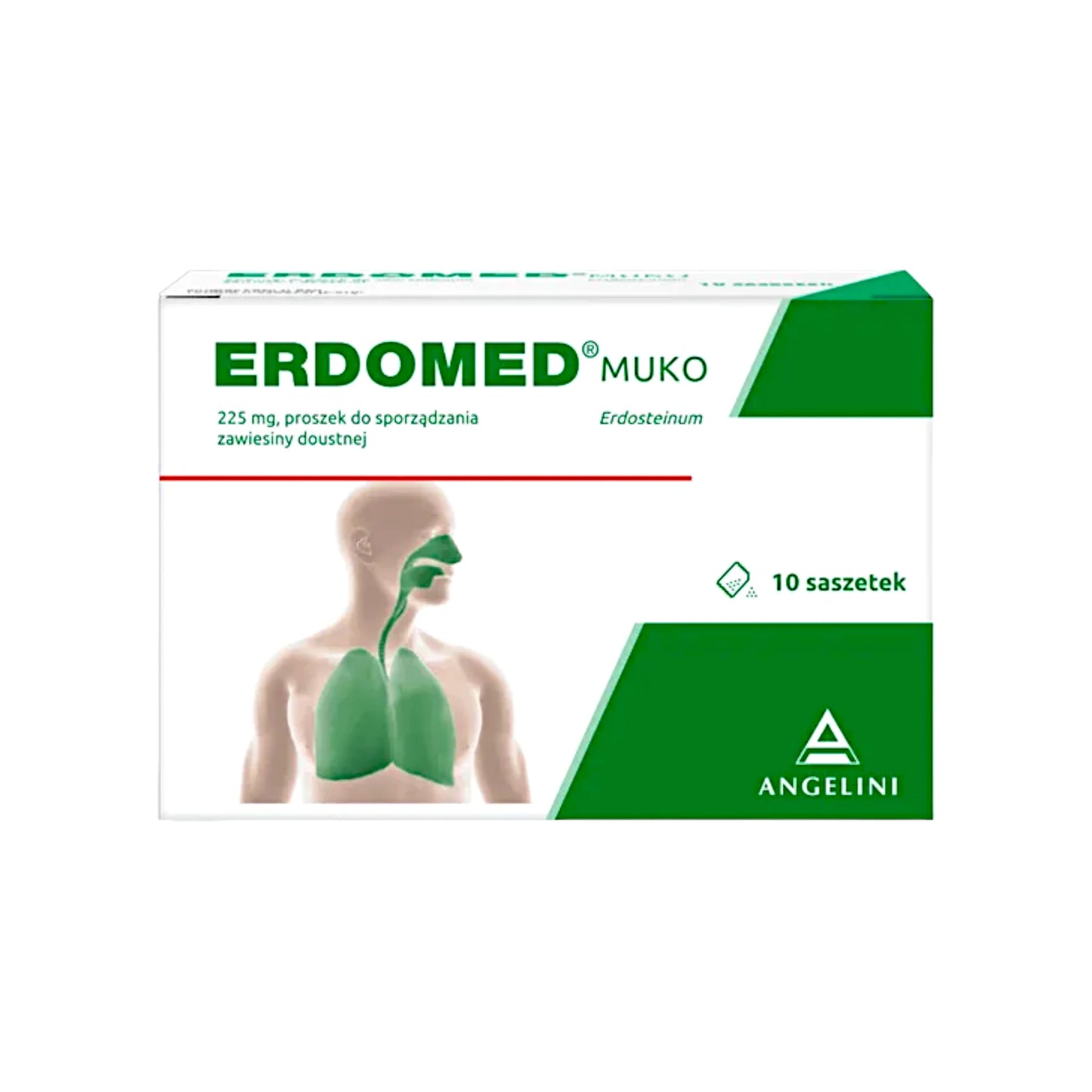
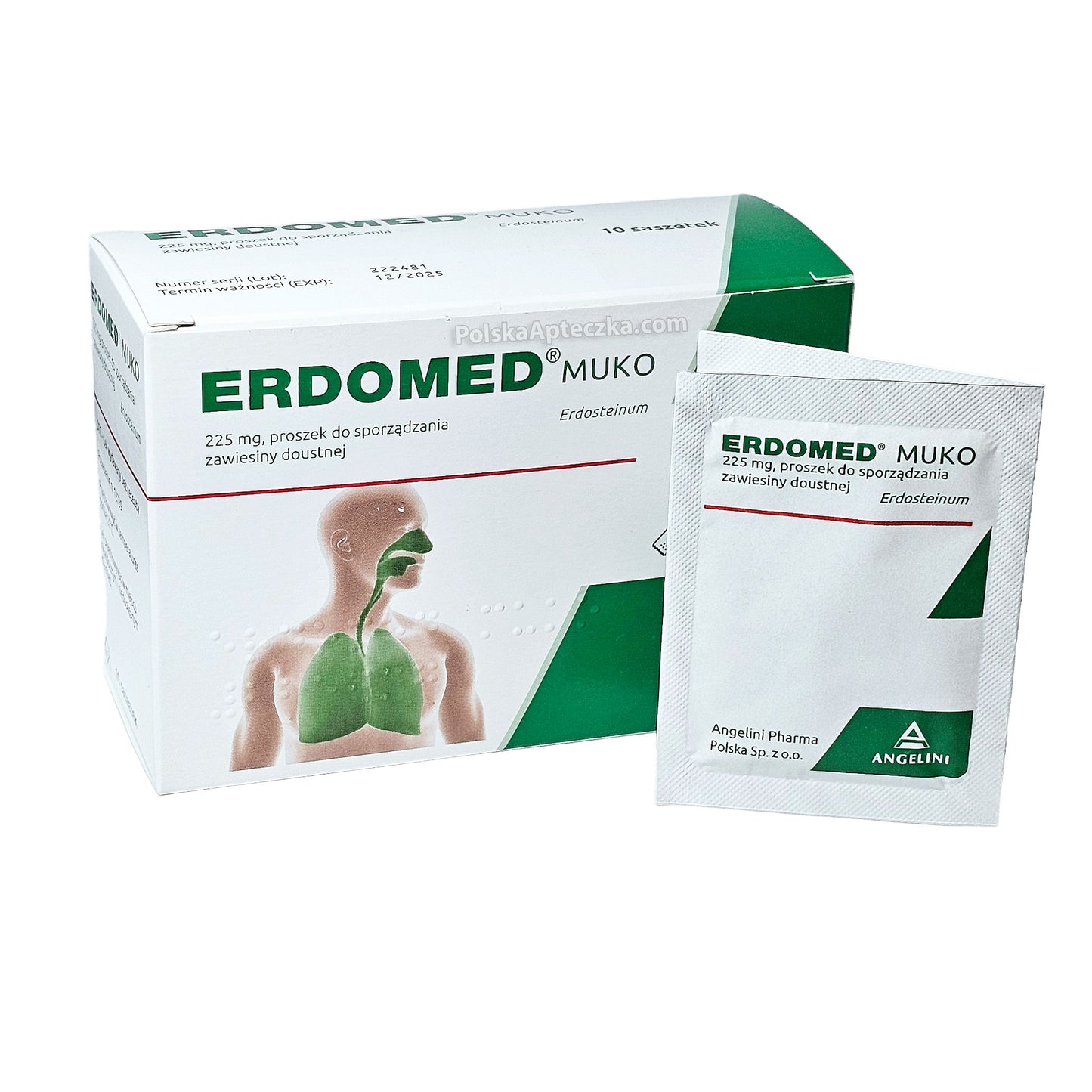
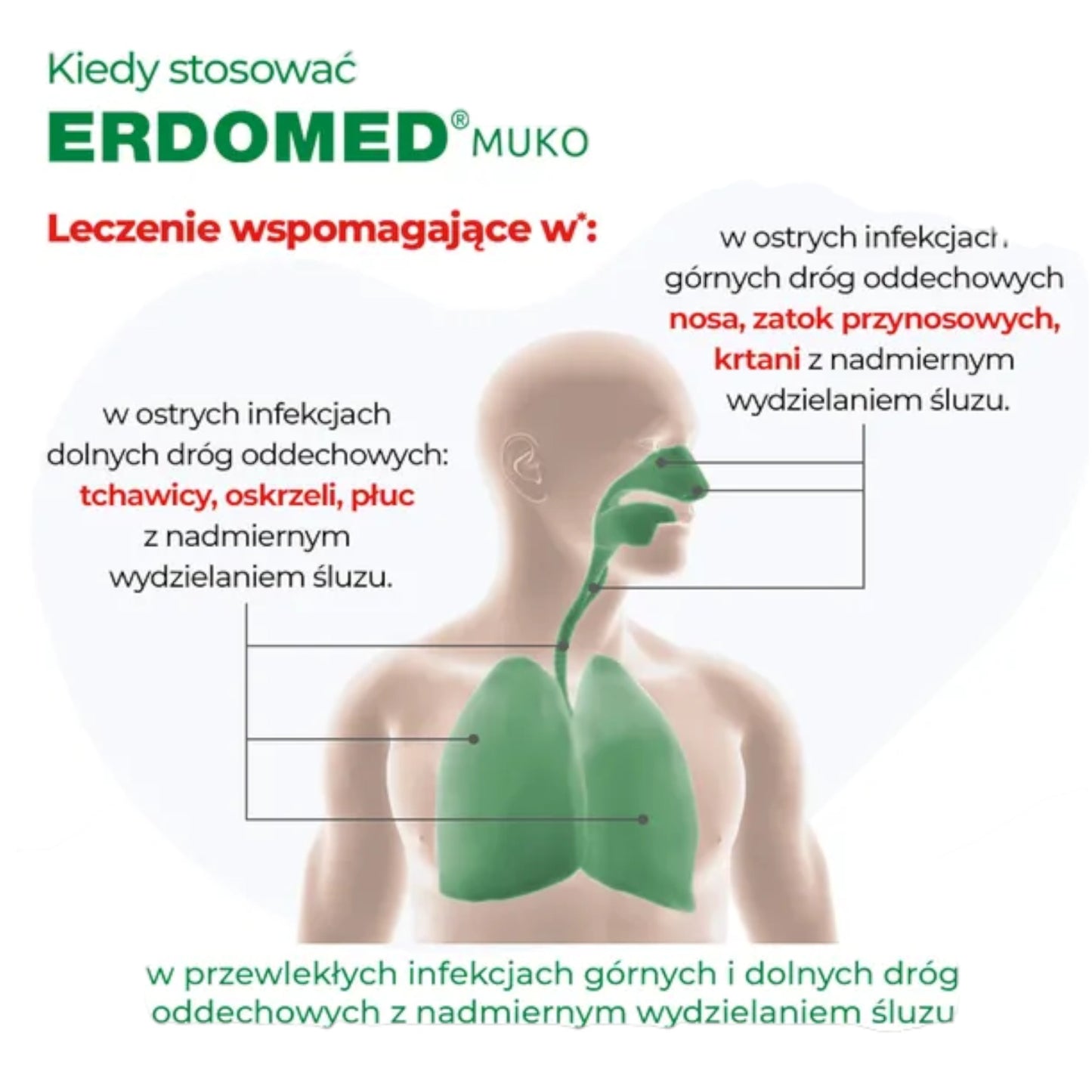
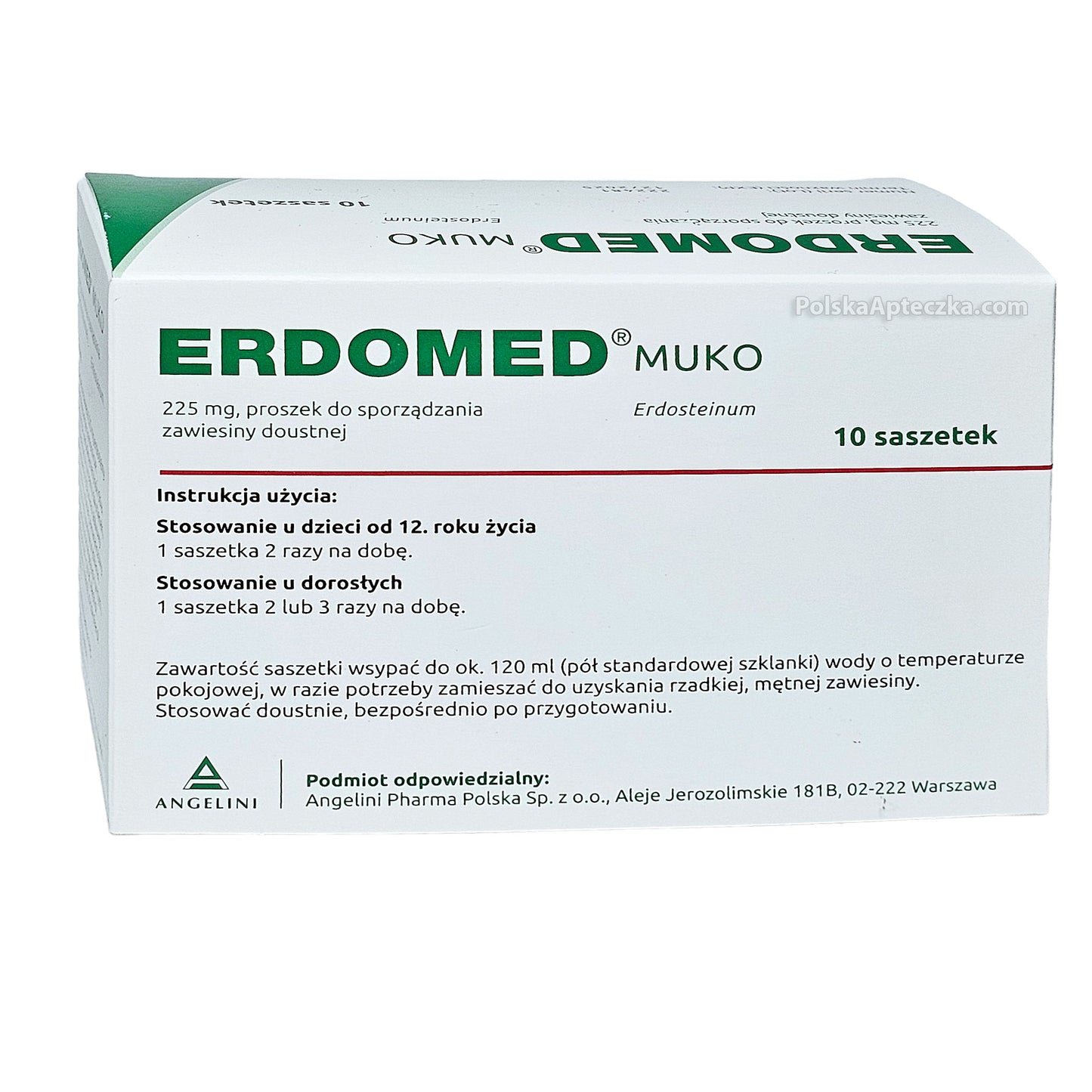
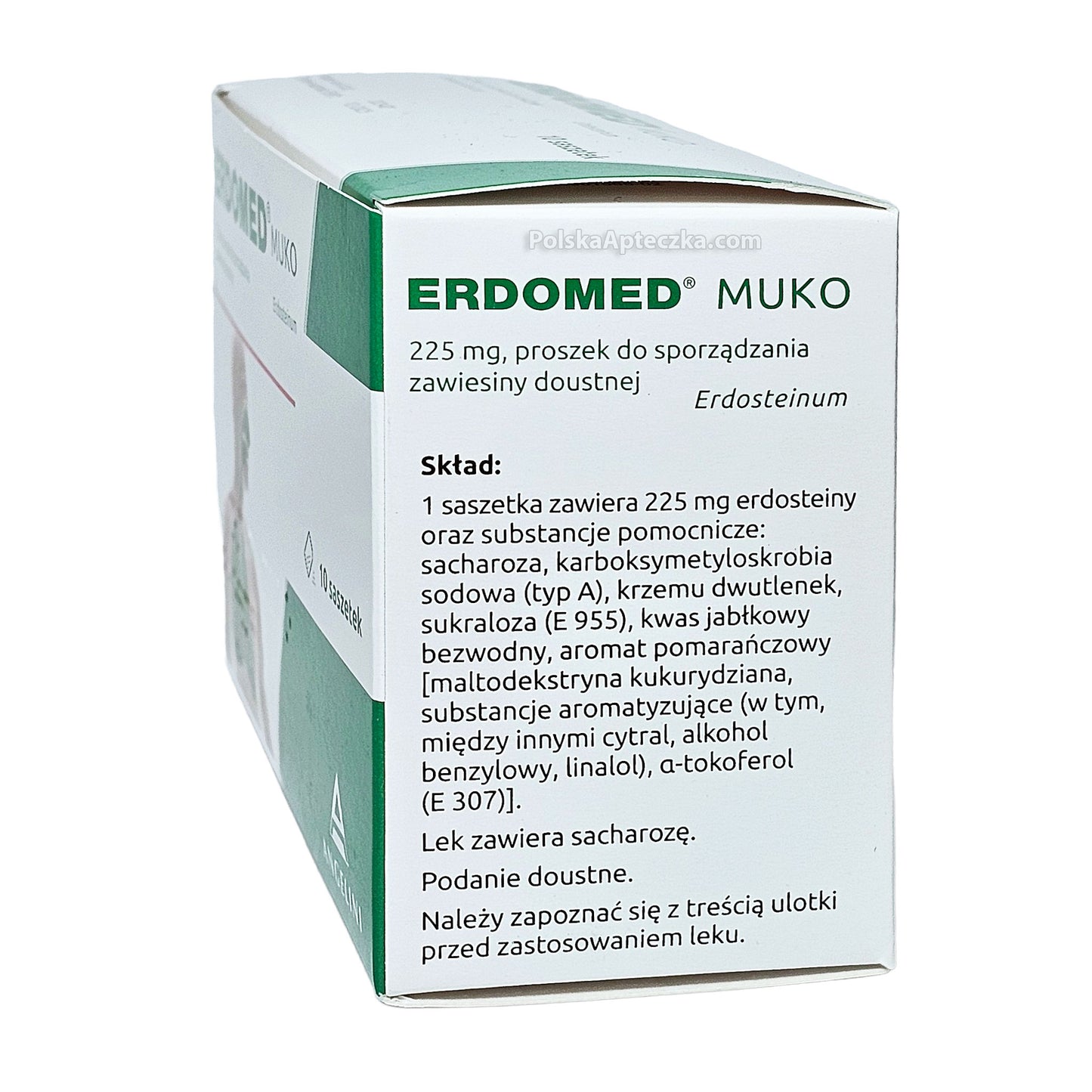
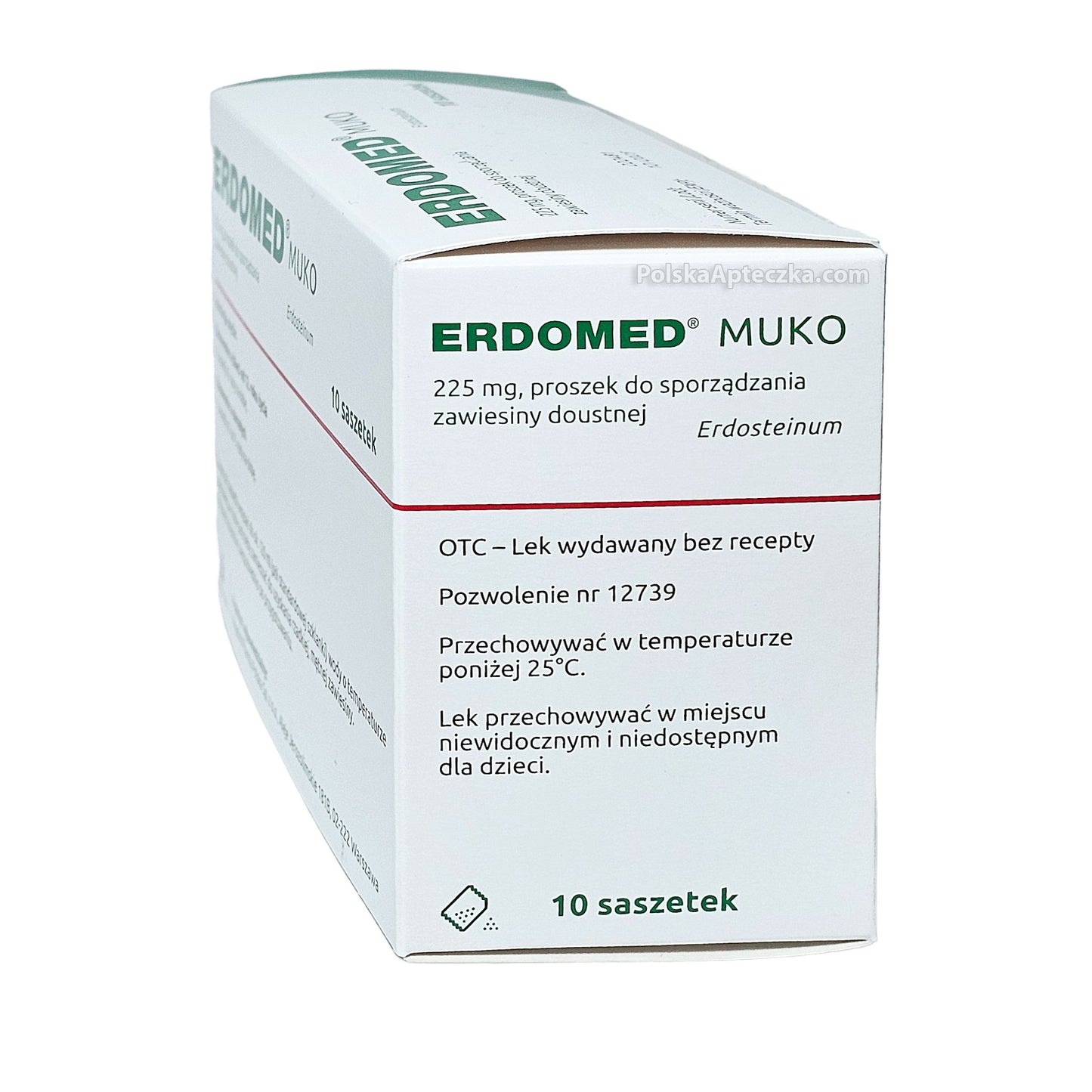
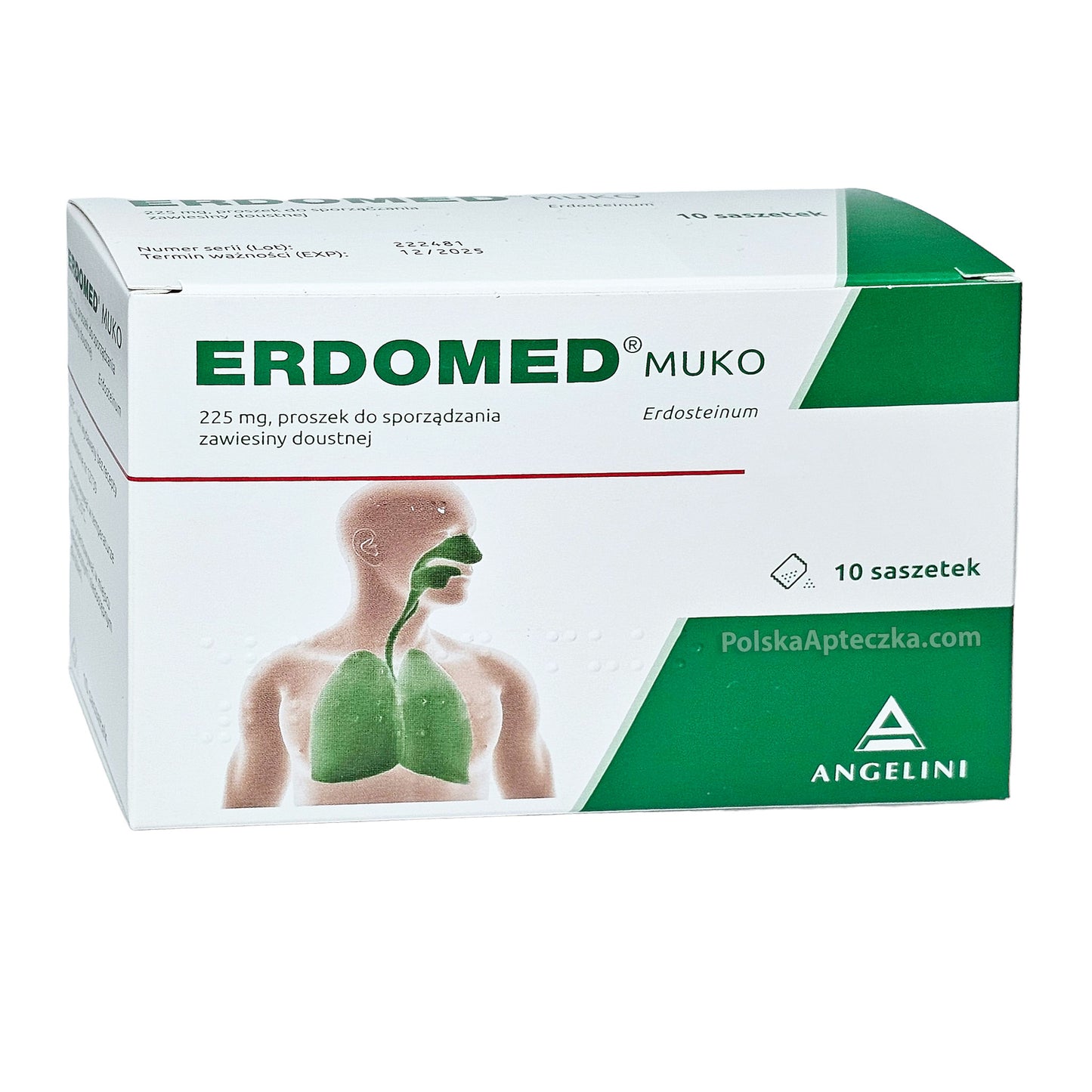
Blog posts
View all-

Sadło z borsuka
Sadło z borsuka skutecznie pomaga w leczeniu grypy i przeziębień, astmy, choroby oskrzeli i płuc, zwiększa odporność organizmu. Od ponad 200 lat borsuczy tłuszcz jest stosowany jako naturalny środek, wspomagający...
Sadło z borsuka
Sadło z borsuka skutecznie pomaga w leczeniu grypy i przeziębień, astmy, choroby oskrzeli i płuc, zwiększa odporność organizmu. Od ponad 200 lat borsuczy tłuszcz jest stosowany jako naturalny środek, wspomagający...
-

Dna moczanowa
Dna moczanowa to schorzenie, które wynika z nadmiaru kwasu moczowego we krwi, co prowadzi do tworzenia się kryształów moczanu sodu w stawach i tkankach.
Dna moczanowa
Dna moczanowa to schorzenie, które wynika z nadmiaru kwasu moczowego we krwi, co prowadzi do tworzenia się kryształów moczanu sodu w stawach i tkankach.
-

Żywokost Maść
Maść z żywokostu, działanie i zastosowanie Właściwości terapeutyczne wykazują nie tylko syntetyczne leki, ale również związki zawarte w roślinach. W fitoterapii przygotowuje się i stosuje preparaty z leczniczych roślin, które mają...
Żywokost Maść
Maść z żywokostu, działanie i zastosowanie Właściwości terapeutyczne wykazują nie tylko syntetyczne leki, ale również związki zawarte w roślinach. W fitoterapii przygotowuje się i stosuje preparaty z leczniczych roślin, które mają...











